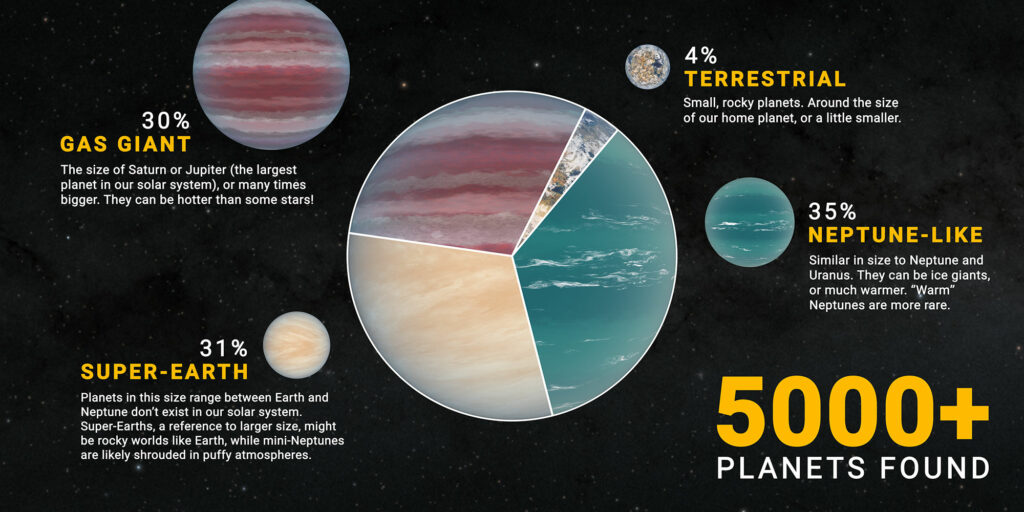On March 21, NASA added to the NASA Exoplanet Archive information about 65 new exoplanets, the existence of which was confirmed by astronomers. Due to this, the total number of extrasolar worlds known to us has exceeded the symbolic mark of five thousand.
The History of Exoplanets
The first confirmed exoplanets were discovered exactly thirty years ago — in 1992. However, they did not orbit a main sequence star, but turned around a pulsar — the remnant of a massive luminary that died during a supernova explosion. The first exoplanets in the history of an ordinary solar-type star were found in 1995. Later, the authors of this discovery received the Nobel Prize.
Over the next few years, astronomers have significantly improved the methods of searching for exoplanets, which allowed to detect them “on stream”. The launch of specialized space telescopes like Kepler and TESS, designed to search for extrasolar worlds, have played an important role.
Out of the 5,000 discovered exoplanets, 30% are gas giants, 35% are Neptune-like worlds, 31% are super-earths, 4% are terrestrials, similar to our planet in their characteristics. But we have to understand that such a distribution is mainly due to the technical limitations of existing search methods. It is much easier for astronomers to find a large exoplanet than a relatively small body the size of the Earth.

However, the situation should change already in the current decade. The commissioning of a new generation of telescopes like the already launched James Webb and the ESO’s Extremely Large Telescope under construction in Chile will significantly expand the capabilities of astronomers to detect satellites of other stars. They will also be able to analyze the atmospheres of exoplanets and, perhaps, even find biomarkers — chemical compounds indicating potential habitability.
According to https://exoplanets.nasa.gov

